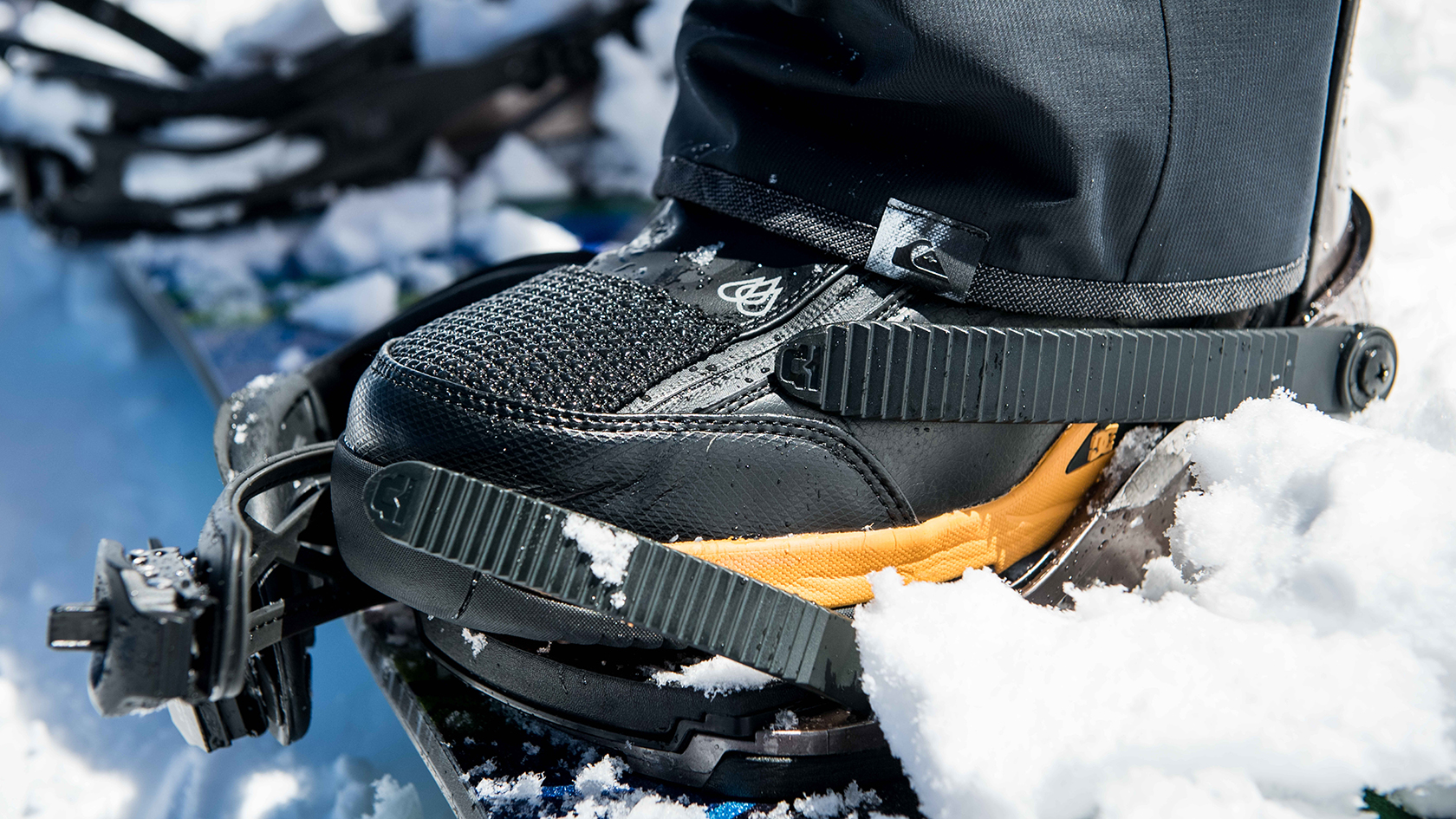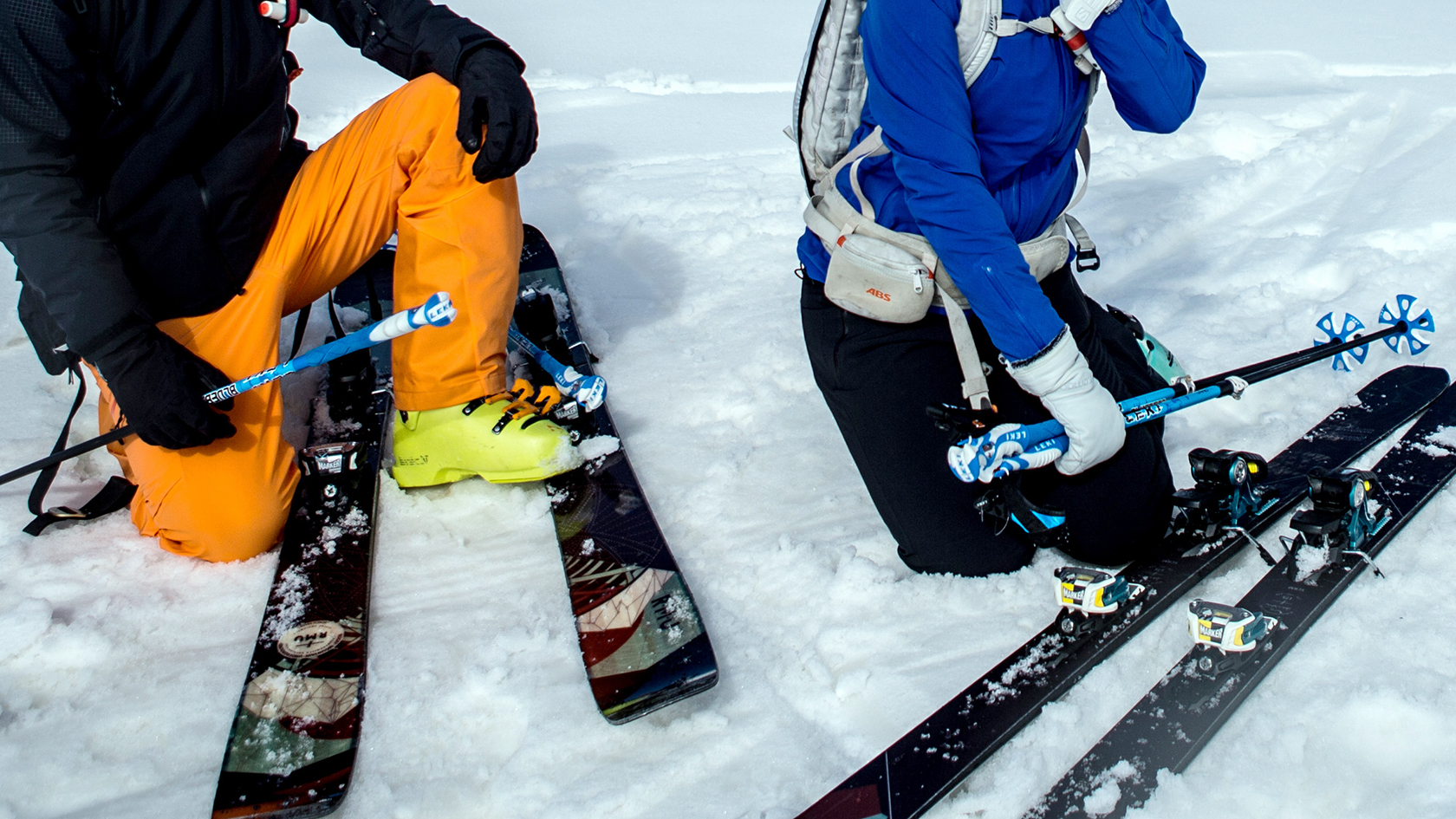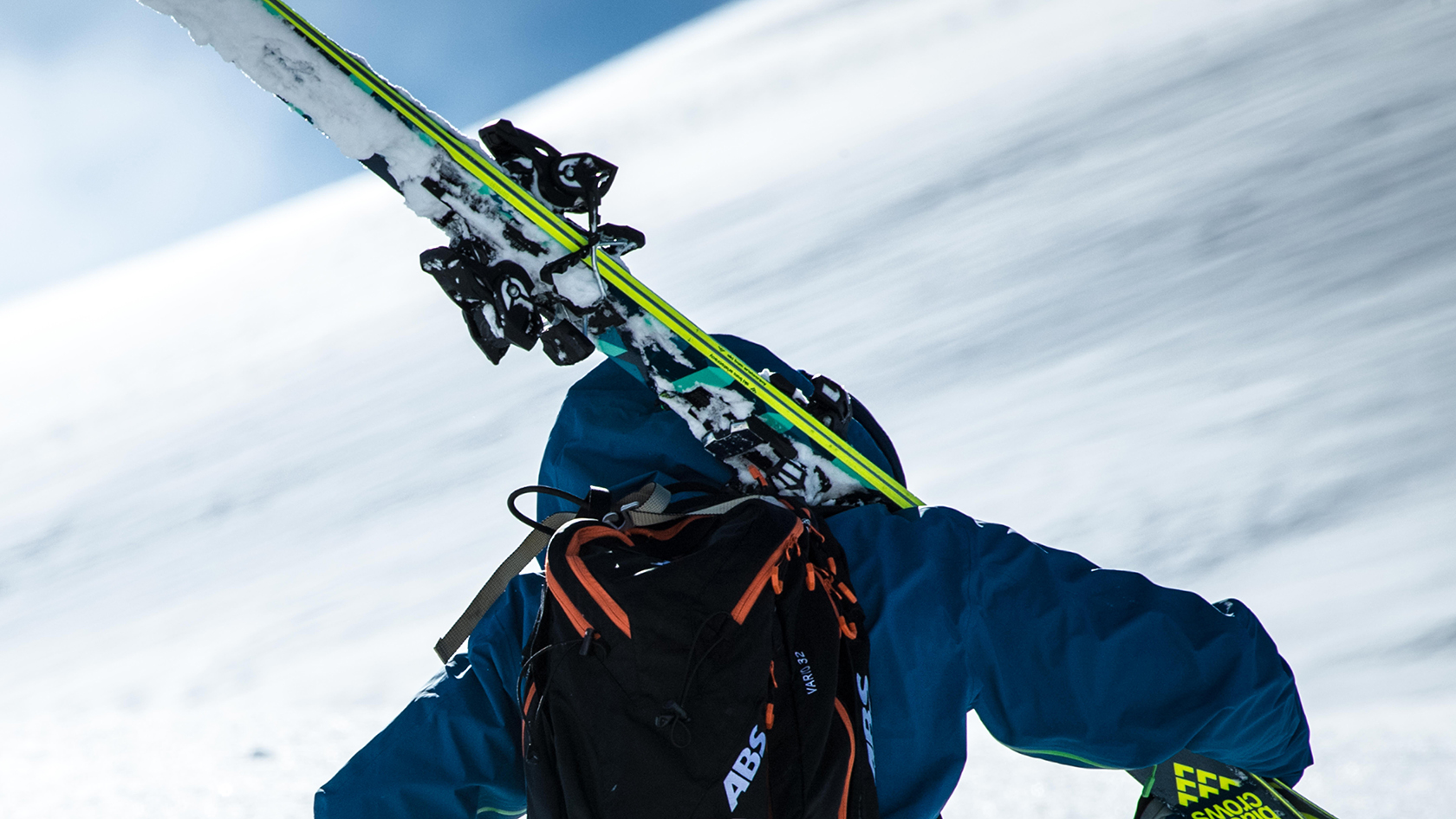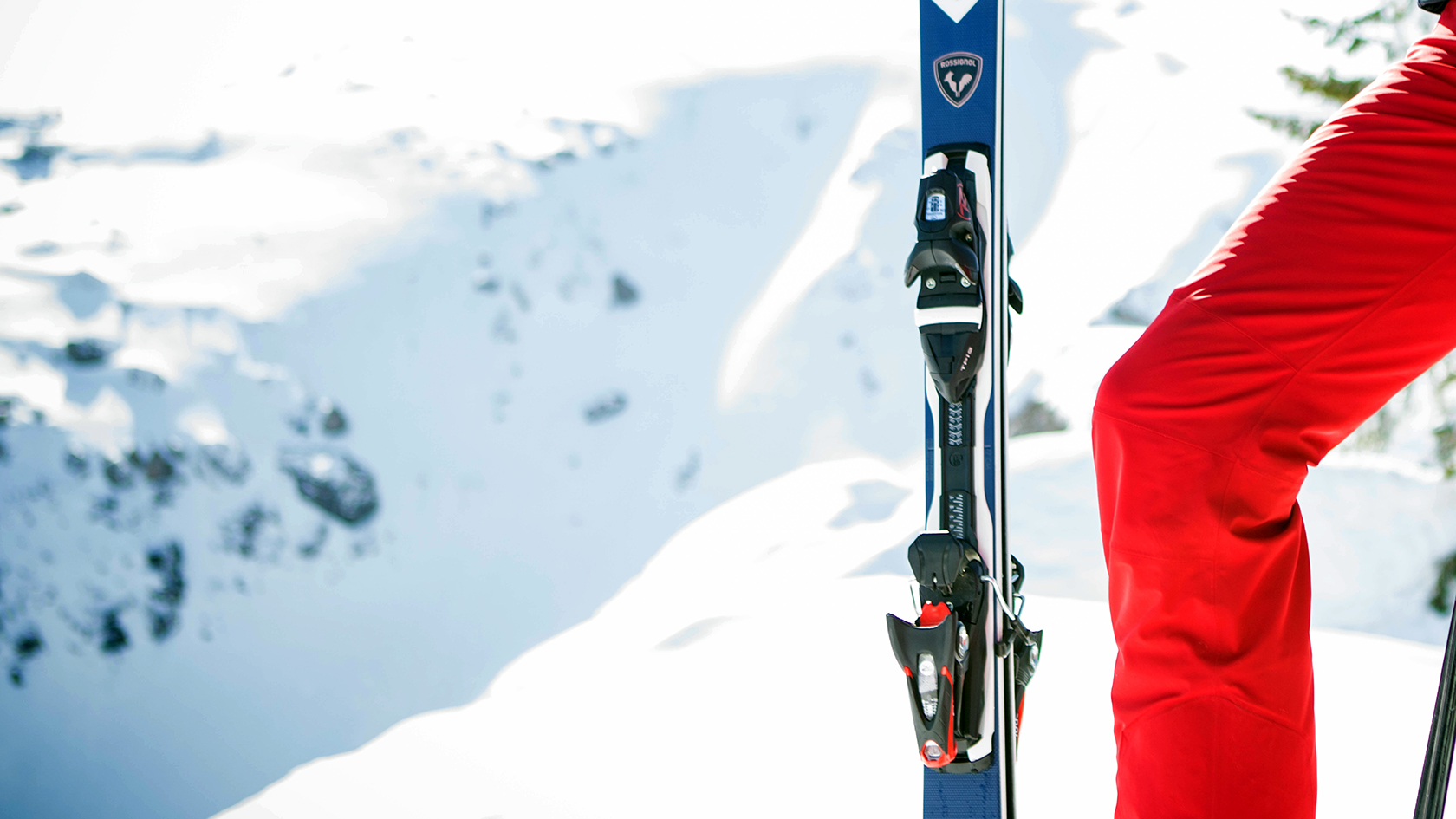Snowboard Bindings
Ah, snowboard bindings – the unsung heroes of your snowboarding setup! Snowboard bindings are the essential link between rider and board, playing a crucial role in the overall snowboarding experience. With a wide variety of styles and designs available, each tailored to specific riding preferences and terrain types, it's important for snowboarders to understand the differences between binding types to make an informed decision when selecting their setup.
From the versatile all-mountain bindings that can handle a wide range of conditions, to the specialized freeride and freestyle bindings designed for aggressive riding and park performance, respectively, the world of snowboard bindings offers something for every rider. Innovative designs, such as the Clew snowboard bindings with their natural foot positioning, and the convenience of step in snowboard bindings, further expand the options available to snowboarders. For those venturing into the backcountry, splitboard bindings provide the necessary functionality to transition between snowboarding and touring modes, allowing riders to explore untouched terrain and earn their turns.
Strap-In vs. Rear-Entry
When it comes to snowboard bindings, you've got two main options to choose from: strap-in bindings and rear-entry (or speed-entry) bindings. Both have their unique benefits and quirks, so let's take a closer look at each one!
Strap-In Bindings — The Classic Choice
Strap-in bindings are the tried-and-true option, and for good reason. These bindings feature two straps – one that hugs your toes and another that wraps around your ankle – to keep your boot snugly in place. The beauty of strap-in bindings lies in their customisability and support. You can fine-tune the fit to your heart's content, ensuring your boots are as comfortable and secure as a baby kangaroo in its mother's pouch.
Some of the most popular strap-in bindings on the market come from brands like Burton, Union, and Ride. Take the Burton Cartel bindings, for example – these bad boys are built to last, with a responsive baseplate and cushy straps that'll make you feel like you're riding on a cloud. Or, if you're looking for a binding that can handle anything you throw at it, check out the Union Force or Ride Rodeo bindings. These bindings are the perfect blend of durability, comfort, and performance, making them a favourite among snowboarders of all skill levels.
Rear-Entry Bindings — The Speedy Solution
If you're the type of snowboarder who values efficiency and ease of use, then rear-entry bindings might just be your new best friend. Also known as speed-entry bindings, these clever contraptions feature a hinged back panel that allows you to slip your foot in from the rear, like a smooth criminal. No more sitting down or bending over to strap in – just step in, snap the back panel closed, and you're ready to shred!
Some of the most well-known rear-entry bindings include the Flow NX2 and K2 Cinch CTX. While they may not offer the same level of customisation as strap-in bindings, they more than make up for it in terms of convenience. Plus, they're perfect for those days when you just can't wait to get on the mountain and start carving up the snow!
Snowboard Bindings — Different Usages
Snowboard bindings now come tailored in several main genres based on intended usage. Each type is engineered with distinct priorities from graphics to materials.
All-Mountain Bindings
All-mountain snowboard bindings aim to strike a versatile balance suitable for riding varied terrain at the resort. Rather than specialising in a particular style, all-mountain bindings are engineered as a jack-of-all-trades system to master anything the mountain offers that day. Their characteristics and capabilities enable skilled navigation across groomed runs, bumps, trees, steeps, powder, park features and more. The flex profile of all-mountain bindings trends towards the moderate zone, not too stiff yet not too soft. This allows fluid transition between carving turns to popping ollies or tweaking butters. The heel cup area offers enough late
ral stiffness to drive solid edge power when needed, while still having some give for comfortable freestyle maneuvering. Quick-entry designs combine with secure lockdown once strapped in, making frequent dismounts and remounts hassle-free across the mountain. Underfoot shock absorption can be tuned on the fly with many all-mountain models. Cushioning rubber or air dampers absorb harsh landings from kickers while also firming up for demanding steeps when required. Component materials like glass/nylon blended baseplates and moderate highbacks walk this fine line between flex and response beautifully. Despite their versatile ambitions, all-mountain builds remain lightweight yet impressively robust to handle daily resort abuse.
For advanced riders looking to expand terrain repertoire beyond beginner zones, they offer improved dynamic performance across disciplines without going full specialised race or jib binding. Of course, individual preference and riding nuance still apply. Some all-mountain riders may prefer a slightly stiffer or softer flex bias based on size, style or terrain tendencies. Most major binding brands now produce an all-mountain middle-ground binding family, each with unique tech and character.
Key features of all-mountain bindings:
- Medium flex for a balance of control and forgiveness
- Durable construction to withstand varied terrain
- Comfortable straps and footbeds for all-day riding
Freeride Bindings
Freeride snowboard bindings are specialised performance instruments built to charge hardcore terrain with confidence. When riders seek to push steep, aggressive lines at mach speed, the precise response and power transfer of freeride bindings allows full commitment with security. They give riders the rigidity and leverage to utterly dominate plummeting descent lines through areas like gnarly chutes, cliffs and race gates. To achieve these demands, freeride bindings start with ultra-stiff chassis and highbacks engineered to eliminate torsional flex when driving edges. The binding becomes one with the board for instant, rigid power application. Freeride heel cups are oversized and wrap heels in a vice-like grip, eliminating lift fatigue when relentlessly carving on the edge.
Every component focuses on zero energy loss from body to board, transferring every shred of leverage down the fall line. Quick-adjust designs allow immediate fine-tuning for variable conditions and snow texture across a long descent without pausing. Heavy duty builds out of materials like magnesium and carbon fibre withstand repetitive pounding in harsh environments. Dedicated hard boot carving rigs like the Spark R&D Arc Pro also fall under the freeride category. They use rigid interfaces to link high-performance boots to boards for racing efficiency and custom retention. Freeride bindings thus cover a range from versatile alpine and split board models to race-bred instruments advancing downhill mastery. Trusting binding security and responsiveness allows focus on the next apex turn, not gear. Preloaded quick-release highbacks generate instant edge engagement from subtle body movements.
With freeride bindings underneath, aggressive riders can pick gnarlier lines and charge faster knowing their gear will respond on a dime without failure. Every design cue serves to charge harder and seek bigger mountain thrills. Leading freeride models include Burton's X-Base, NOW Drive, and Union Ultra bindings, plus Plum and Fritschi alpine rigs. When course conditions turn serious, only the pinnacle of freeride binding performance will suffice.
Characteristics of freeride bindings:
- Stiff flex for maximum responsiveness and power transfer
- Rugged construction to handle demanding terrain
- High-end dampening to absorb chatter and vibrations
Freestyle Bindings
Freestyle snowboard bindings are engineered specifically to enhance playful trick riding in the terrain park and halfpipe. With priorities like shock absorption, flex, low profile and lightweight, they allow effortless popping, spinning, jibbing and tweaking. The medial flex profile trends are very soft, acting almost like shock absorbers on landings from big air and reducing chatter across jibs. Maximum cushioning keeps feet and legs safe when repeatedly hucking tricks, while thin profile bindings increase valuable board feel and ground control. Super lightweight builds, often under two pounds, translate to enhanced pop, flick and aerial manoeuvrability. Forgiving flexibility while retaining board connectivity makes tricky gymnastic moves feel more natural and reduces fatigue. Quick-entry designs with simple multi-directional straps and micro ratchets allow swift dismounting to session features nonstop. Adjustments can be tweaked between hits to refine the flex sweet spot and lockdown. Despite their soft flex, freestyle bindings are built incredibly tough to withstand daily grinding and slamming without failure. Leading men's models include Burton's Malavita, Union's Force and Rome's D.O.D. For women, standouts come from Burton, Salomon and Ride. When dialling in a binding/board setup for tricks, these optimised freestyle bindings unleash most airs with control.
Features of freestyle bindings:
- Soft to medium flex for tweakability and press-ability
- Lightweight construction for easy manoeuvrability
- Canted footbeds and shock-absorbing materials for impact protection
Splitboard Bindings
Splitboard bindings have very particular engineering demands, needing to function both skinning uphill and then riding downhill when boards separate into touring skis. Weight becomes an ultimate priority, with total binding mass ideally under two pounds including interfaces for efficiency when skinning and transition speed. The quick-change capability allows split board bindings to convert from climb mode to secure snowboarding configuration in seconds using levers, pins and locks. The downhill flex profile must retain a natural feel through features like multiple-directional flex zones and pivoting highbacks that respond laterally while touring. Uphill wear resistance and padding keep skin contact comfortable for long tours. Once clicked in for descents, split board bindings lock feet and boards together for solid control when slashing deep powder. They also must readily accept clip-on crampon spikes for icy bootpacks and manage ice buildup when skinning. Leading split board binding brands like Spark R&D, Union Expedition, Karakoram and Voile optimise this total uphill-downhill experience. As the backcountry continues growing in popularity, expect constant split board binding innovation as the crucial connection between rider and planks.
Key aspects of split board bindings:
- Ability to switch between snowboard and touring modes
- Lightweight design for easier uphill travel
- Crampon compatibility for icy or steep terrain
Snowboard Binding Components
While varied in execution, all modern bindings share similar component anatomy.
- Baseplates — The rigid baseplate forms the foundation that mounts to the board top. Baseplates are typically glass-reinforced nylon composite for stiffness and temperature resilience. A fixed heel cup rises from the rear baseplate to cup boot heels. The front features adjustable toe ramps to grip boot toes. Disks on the bottom interface with board inserts and channels. Canted and wedged baseplate options fine-tune stance angles.
- Highbacks — Highbacks are the upright spines that cradle the calves and transmit body leverage to the board's edges. They're engineered from materials like glass/nylon composites, carbon fibre and polyurethane blended for the desired lateral stiffness and flex characteristics. Padding minimises calf bite. Many incorporate dialling forward lean adjustment.
- Heelcups — Heelcups integrated into the baseplate or highback grip boot heels firmly to prevent lift and maximise control power transfer. They're typically oversized and wrap rearward around heels. Internal J-bars, dampening foams and airbags can further lock heels solidly in place when cornering hard.
- Buckles & Straps — Ankle and toe straps cinch tight over boot zones for security and response. Nylon webbing straps feature tool-free length adjustment. Buckles operate as ratcheting levers to incrementally apply tension and then pop release. Aluminium, carbon fibre and engineered polymer create lightweight single or double-take buckles.
- Bushings & Plates — Shock-absorbing rubber or urethane bushings under baseplates allow cushioning flex to ease harsh landings. Some bindings have baseplates in two parts joined by a bushing wedged hinge at the heel and/or toe for multi-directional flex. Plates offer extra damping and amplitude for certain freestyle bindings.
Binding Sizing
Choosing the right binding size corresponds to the boot sole length for proper support. Size codes like Medium or Large don't correspond directly across brands. Instead, match the binding size to the boot sole length in mm:
- Youth sizes or Men's 6-8: 240mm to 265mm
- Men's size 8-11: 265mm to 290mm
- Men's size 11-14: 290mm to 315mm
- Men's size 14+: 315mm+
- Women's specific sizes: 240mm to 270mm
Measure boot sole length and reference binding size charts to identify the proper binding model and size. If between sizes, size up for room to grow and layer socks. Boots shouldn't overhang binding heel cups and toe ramps. Now let's explore evolving binding technologies.
Binding Technologies and Innovations
Engineering refinements continuously improve bindings’ performance and durability:
Baseplate Damping Systems
Snowboard bindings incorporate advanced damping technologies in their baseplates to provide shock absorption without losing board feel and control. Rubber or air-filled perimeters allow the binding base to flex independently, isolating vibration before reaching feet and legs. Burton's Reflex system opens gaps in the binding/board interface, letting the components flex separately. Channel mounting designs position articulated rubber bushings and dampers between bindings and board. Modular damping elements can be adjusted or swapped to fine-tune stiffness. These underfoot systems aim to tame chatter and harshness, protecting riders from jarring impacts. Yet they retain critical stability and terrain feedback by limiting, not eliminating, base flex. Damping helps smooth out the ride and reduces fatigue without sacrificing response.
Step-In & Quick Entry
Convenience and speed of entry remain key binding goals. Burton's Step-On system allows boots to click directly into locks on the binding for tool-free engagement. Riders simply step down, hear a click and ride away. Salomon's Shadowfit bindings have a rear lever bumped by the boot during entry to spring the heel cup open instantly. Clips, magnets, pins and proven rear-entry designs all aim to deliver quick and consistent boot coupling. While innovations try to mimic ski bindings for ease, reliability issues have slowed mainstream adoption. Many riders still prefer strap bindings for security. But incremental improvements inch towards a truly hassle-free step-in system, driven by the appeal of quicker lapping.
Highback Mobility
Highback support spines are evolving beyond static vertical forms to become more dynamic and articulate. Burton's Rotate High technology integrates a bushing that allows the highback to independently match uneven terrain angles as knees bend. Union's Multi-Angle Rotation bindings incorporate a split highback divided by a central bushinged hinge. This allows the two highback halves to flex naturally in sync with board and knee movements. Vertical hinging highbacks that ease tweakability are also popular in freestyle models. Unlocking highback mobility improves control on irregular snow surfaces and boosts natural athletic motion.
Women's-Specific Design
Women's bindings tailor engineering and form specifically for female riders' anatomy and riding needs. Key differences include softer lateral flex to address wider hip and calve positioning. Contact points downsize for smaller feet and slimmer ankles. Enhanced shock absorption and lower highbacks cater to lighter weights. Stance, canting and angle pre-sets optimised for women. Brands like Burton, Salomon, and NOW offer comprehensive women's binding collections with models spanning styles. Improved female-specific construction helps bindings disappear underfoot so women to focus on riding not gear.
Eco-Conscious Builds
Sustainability is influencing materials and processes in binding construction. Recycled baseplate plastics, renewable plant-based composites and bamboo replace some petroleum plastics. Adhesives avoid toxic ingredients. K2 introduced indoor-compostable bio-based bindings to reduce landfill waste. Expect more eco-driven material choices balanced with high performance. Greener technology will be a growing binding trend.
Digital Customisation & Analytics
Digital scanning captures precise 3D foot data to engineer customised binding fit and shaping. Binding CAD files feed direct 3D printing, allowing tailored moulding in flexible nylons and rubber compounds. Big data analytics on elite rider usage help Burton refine quantitative design insights. Digital technology enables faster evolution and extensive personalisation. Bindings can match bodies and styles more closely through ongoing data integration.
Splitboard and Touring Innovation
Backcountry-specific demands drive binding advances like instant tool-free transitions, enhanced uphill ergonomics and interchangeable components to shed weight. Karakoram's innovative interface technology allows reshapeable, climbable board surfaces for the ultimate backcountry experience. Bindings remain a hotbed for patents and material science refinements as brands seek performance advantages. Subtle engineering tweaks often enable large leaps in terrain mastery, control and athletic expression as materials science blends with mountains. While bindings continue to specialise and advance, certain fitting and setup insights remain evergreen.
Top Snowboard Binding Brands
Now that you know what to look for in a snowboard binding, let's take a moment to appreciate some of the top brands in the game. These companies are the crème de la crème, the bee's knees, the cat's pyjamas – you get the idea. They're the ones pushing the boundaries of innovation and design, creating bindings that are not only functional but also downright cool.
Burton — You can't talk about snowboarding without mentioning Burton. They're like the godfather of the sport, the original gangster of the slopes. Burton offers a wide range of bindings for every type of rider, from the beginner-friendly Freestyle to the high-performance X EST. But wait, there's more! Burton is also known for their revolutionary Step On system, which allows you to click into your bindings faster than you can say "shred the gnar." It's like having a magic wand that instantly attaches your boots to your board, no straps are required. Talk about convenience!
Union — If Burton is the godfather, then Union is the tough guy in the snowboarding world. Their bindings are built to withstand even the most brutal beatings, like a tank rolling through a battlefield. Popular models like the Force, Strata, and Atlas bindings are designed to handle anything you can throw at them, whether you're charging down steep chutes or jibbing in the park. But don't let their rugged exterior fool you – Union bindings are also incredibly responsive and versatile. It's like having a secret weapon strapped to your feet, ready to dominate any terrain that comes your way.
Ride — Last but certainly not least, we have Ride bindings. These guys are like the Swiss Army knife of snowboard bindings – they can do it all. Ride offers a range of bindings for every skill level and riding style, from the park-friendly Rodeo to the all-mountain Capo and the high-end LTD. What sets Ride bindings apart is their focus on comfort and adjustability. They're like the Rolls-Royce of bindings, with plush straps and footbeds that mould to your feet like a custom-fitted glove. And with their easy-to-use adjustment systems, you can dial in the perfect fit faster than you can say "powder day."
Related articles

Let us know you agree to cookies
We use marketing, analytical and functional cookies as well as similar technologies to give you the best experience. Third parties, including social media platforms, often place tracking cookies on our site to show you personalised adverts outside of our website.
We store your cookie preferences for two years and you can edit your preferences via ‘manage cookies’ or through the cookie policy at the bottom of every page. For more information, please see our cookie policy.










